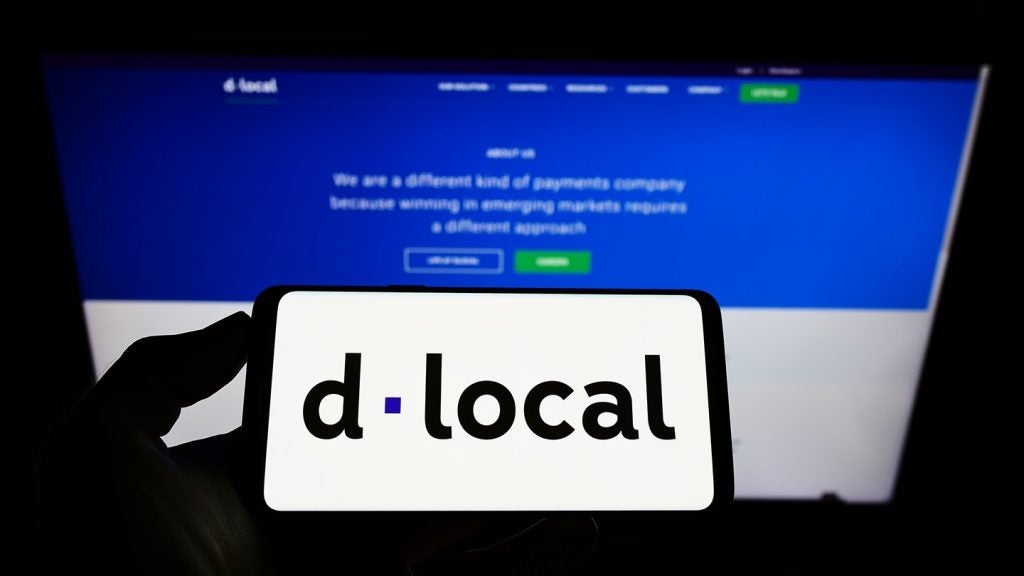At the recent Prepaid Cards Summit,
held in Rome in November 2009, VRL, publisher of Cards
International, presented exclusive research on the awareness and
usage of prepaid by UK and Italian consumers. Here, Victoria Conroy outlines some of the
major findings and what they mean for prepaid players and
consumers.
One of the key presentations of the 2009
Prepaid Cards Summit – held in November in Rome – came from VRL,
publisher of Cards International, in conjunction with global market
research firm TNS, which updated its groundbreaking 2008 research
into prepaid awareness in the UK by widening 2009’s research to
over 6,000 consumers in the UK and Italy.
In the UK and US, prepaid gift cards have
driven the market – but in Italy it is government programmes and
bank issuers that have led the way. It is important to recognise
that different markets will have different lead products, and to
analyse the level of banking fees in each market and whether
prepaid works as a complementary product, or whether there is a
business case to offer ‘stand-alone’ products.
Italian consumers are notoriously
price-conscious and have a reputation for mis-trusting banks when
it comes to bank fees, which tend to be higher than many European
other countries.
Prepaid products are much cheaper when
compared to traditional current accounts and credit cards. Whereas
many Italian credit cards charge annual fees of between €30 ($43)
and €40, and current accounts charge upwards of €10 per month,
prepaid cards cost as little as €5 to purchase initially. This goes
some way to explaining why prepaid has been so successful in Italy,
as prepaid is viewed by Italian consumers as a much cheaper
alternative to a bank account.
How well do you really know your competitors?
Access the most comprehensive Company Profiles on the market, powered by GlobalData. Save hours of research. Gain competitive edge.

Thank you!
Your download email will arrive shortly
Not ready to buy yet? Download a free sample
We are confident about the unique quality of our Company Profiles. However, we want you to make the most beneficial decision for your business, so we offer a free sample that you can download by submitting the below form
By GlobalDataAwareness of the prepaid
concept
Italy stands out as the most dynamic
prepaid card market in Europe, thanks to a legacy of strong debit
card usage and consumer familiarity with the prepaid model due to a
high penetration of prepaid mobile phones.
More than 90 percent of mobile phone contracts
in Italy are prepaid, so banks found it very easy to introduce a
financial product using the same concept. What is interesting is
that prepaid cards in Italy are popular with middle and upper class
consumers, suggesting that prepaid cards hold no social class
distinction.
Whereas 50 percent of UK consumers surveyed
were aware of what prepaid cards were and how they worked, over 59
percent of Italians surveyed said they understood prepaid cards.
Conversely, while 19 percent of Italians surveyed were not aware of
prepaid, that figure rose to 33 percent among UK consumers –
suggesting that issuers and payment networks in the UK still have
an uphill job to do in terms of educating consumers.
The situation in the UK is markedly different,
but awareness appears to improving. Last year, 10 percent of UK
consumers were aware of prepaid cards but said they did not really
understand how they worked.
This year, that figure has risen to 15
percent, indicating that advertising campaigns by programme
managers and education initiatives are beginning to have an effect.
But how would these figures change, particularly in the “not aware”
category, if there was a major promotional push by the payment
networks whose logos appear on the card?
What is interesting is that the 12 percent
figure for those in the UK who have purchased a prepaid card is
virtually unchanged from that of 2008, indicating that around 6
million people in the UK have purchased an open-loop prepaid card.
This does not match up with the estimates of the number of prepaid
cards that have been issued in the UK so far, which is around 1
million.
There appears to be a misunderstanding among
UK consumers about what a prepaid card is, and also whether UK
consumers are able to distinguish between prepaid and debit and
credit cards. Also, it is possible that the concept of ‘free
banking’ in the UK has limited demand for prepaid. Given that most
UK current accounts do not charge annual, monthly, or per
transaction fees, and that debit cards are perceived as being free
by consumers, it would appear that demand for prepaid, at least for
the time being, is mostly concentrated within the tiny unbanked and
migrant worker segments.
A major finding is that half of the UK sample
use prepaid cards for making internet purchases. The growing
popularity of using prepaid cards for making online purchases is
undoubtedly a good thing in terms of consumer uptake and
awareness.
However, there is some question of whether
prepaid usage on the internet is directly competing against online
payment solutions such as PayPal and other e-wallet-type
products.
In the UK, PayPal boasts 20 million accounts
alone. The issue that this raises is whether e-wallet solutions are
far easier for consumers to understand than prepaid cards.
In Italy, online spending has clearly helped
the uptake of prepaid, assisted by other card products having
limited acceptance online. But usage at retail locations for
everyday purchases is undoubtedly a growing trend.
Travel and entertainment spending, both online and at physical
locations, is a popular spending category for prepaid in Italy.
Fears about online security are also helping the uptake of prepaid
– people in some markets are still wary about using their credit
and debit cards online. Prepaid offers a relatively risk-free
alternative.
Reloading and fees
One key finding to come out of the
research is that the sooner someone activates and uses their
prepaid card, the more likely they are to reload it. Those who are
more likely to activate and use the card are those who are educated
about prepaid in the first place. They will also be more likely to
use it regularly for a wider range of purposes – for the industry,
that means greater transaction and purchase volume.
Getting consumers educated about prepaid is
critically important and could be the defining factor between
success and failure.
Many in the industry have tried to make the
point that prepaid is not a single product or definition, but a
solution that facilitates several varying applications that are
used by varying groups of people.
It is important that marketing messages take
into account regional or age differences in terms of how people use
their prepaid card, but at the same time, solution providers should
not base their marketing campaigns on rigid application definitions
that restrict product take-up to a specific group of people.
For example, when we think of remittances, we
think of migrant workers sending money to their families abroad.
But remittances can also be parents transferring funds to their
children who are away at university. Marketing messages need to be
driven by actual usage of the card, by who is using the card and
for what purpose.
What we can also gauge is that the high
frequency of monthly loading in the UK could be attributed to
people having their salaries or other income – such as social
disbursements – deposited directly onto their card on a weekly
basis, or they are transferring money from their bank accounts onto
the card once they get paid.
This could suggest that these cards are being
used regularly by people who regard the cards as an all-in-one
transactional tool. If that is the case, then consumers are already
displaying some degree of loyalty to the card, perhaps giving the
prepaid provider an opportunity to deepen that relationship with
the customer and cross-sell other services to them.
Regular usage of the card will provide a rich
stream of transactional data for the provider, which they can then
use to create tailored marketing messages or to better understand
how the consumer views the card and how the provider can use that
to their advantage.
When it comes to weekly or fortnightly
loading, there could be many reasons – many temporary or casual
cash-in-hand workers are paid on a weekly basis, and people who
receive social benefits like unemployment benefits receive payment
weekly or every two weeks.
People may be more hesitant or nervous about
transferring large sums of money to the card in one go, and may
prefer to load smaller sums more regularly. There may be concerns
about security, or fears about overspending. Perhaps they view the
card as more of a budgeting tool than a transactional tool. Again,
providers need to pay close attention to how the card is being used
and tailor their strategies accordingly.
Overall, users of prepaid cards do not
perceive that they are paying a lot in monthly fees or charges to
use their cards. It is possible this is a question of consumer
education – or perhaps consumers perceive their prepaid cards to be
cheaper when compared to traditional current accounts or other
transaction methods.
Those that use and load a prepaid card
regularly are more aware about the fees they incur, yet this
doesn’t to discourage them from using the cards. Based on this, it
seems that fees are not a key factor in stopping increased
usage.
Consumers that use their cards less frequently
tend to have a less informed understanding of the card fees. When
this group of people is contrasted with more frequent users, who
know about the fees and are not put off by them, there appears to
be a case for prepaid providers to give more prominence to fee
levels in their marketing and communication materials.
After all, no consumer likes to be ambushed by
what they perceive to be hidden fees; if prepaid providers ensure
that they are upfront and transparent about what they are charging,
consumers will feel more informed and as a result, more comfortable
with using the cards on a regular basis.
Gift card awareness
Where the UK and Italy really differ
is that UK consumers are much more familiar with the gift card
concept than their Italian counterparts.
UK retailers have long had their own
closed-loop vouchers and gift cards in-store. This trend also
explains why it is mostly younger consumers, both male and female,
who are more aware about gift cards – as they have had more
exposure to them than older consumers have, based on shopping
habits.
What is interesting is that this high level of
gift card awareness is not much different from gift card awareness
in the US, where the cards have been in usage for far longer. Given
that Europe tends to lag behind the US by between two to five years
in terms of product uptake, UK awareness and usage should now be
accelerating. However, it is still possible that many UK consumers
are aware of the cards, but that usage levels are still much lower
than projected.
The prospects for gift cards in Italy appear
to be limited for the time being, as open-loop cards account for
over 70 percent of all prepaid cards in Italy.
The main reasons for the lack of gift card
traction in Italy is the fragmented nature of Italy’s retail
market, where market shares are much more evenly spread out and
there is an absence of a legacy of paper-based gift voucher
programmes. Although some retailers such as Essalunga are rolling
out gift cards, in Italy it would appear that there are not
sufficient scale volumes to justify and sustain such
programmes.
Conclusion
These findings raise some strategic
questions for prepaid providers – should gift card retailers be
looking to market more to existing prepaid card users? Existing
prepaid users are obviously comfortable with the product so they
should be a natural target for gift card providers. Why not
leverage the marketing strengths of both and view them as
complementary products to each other, rather than competing
propositions?
In the UK there appears to be a strong group
of mutual purchasers and receivers of gift cards. This would appear
to support the view that word-of-mouth advertising is still one of
the best ways to get consumers interested in the cards, and that
consumers appreciate the flexibility and convenience of gift cards.
It is up to the prepaid provider to make sure that the consumer
experience is a positive one.















